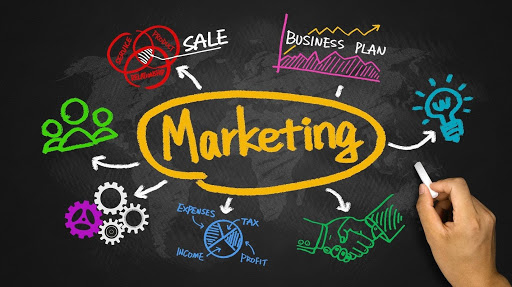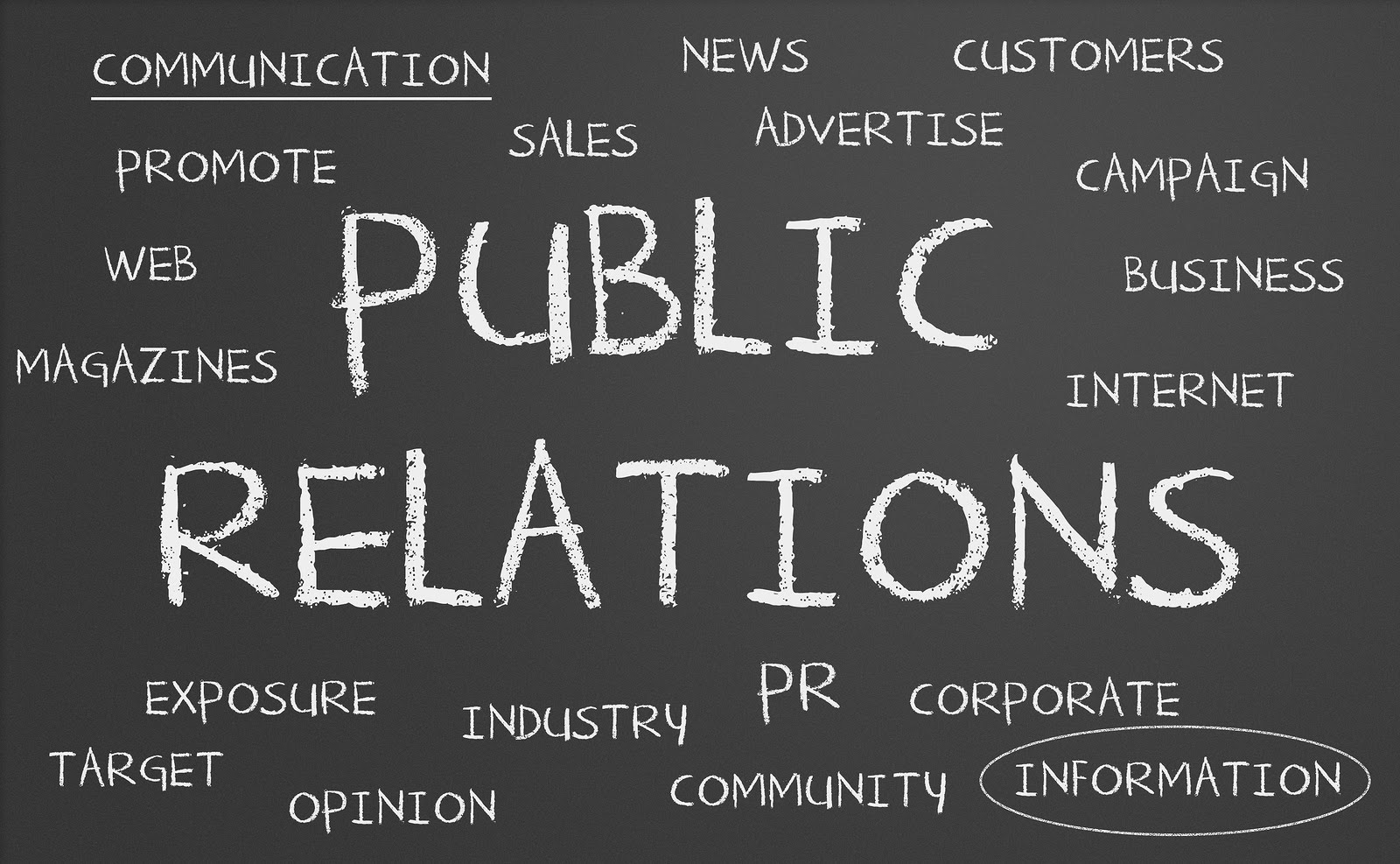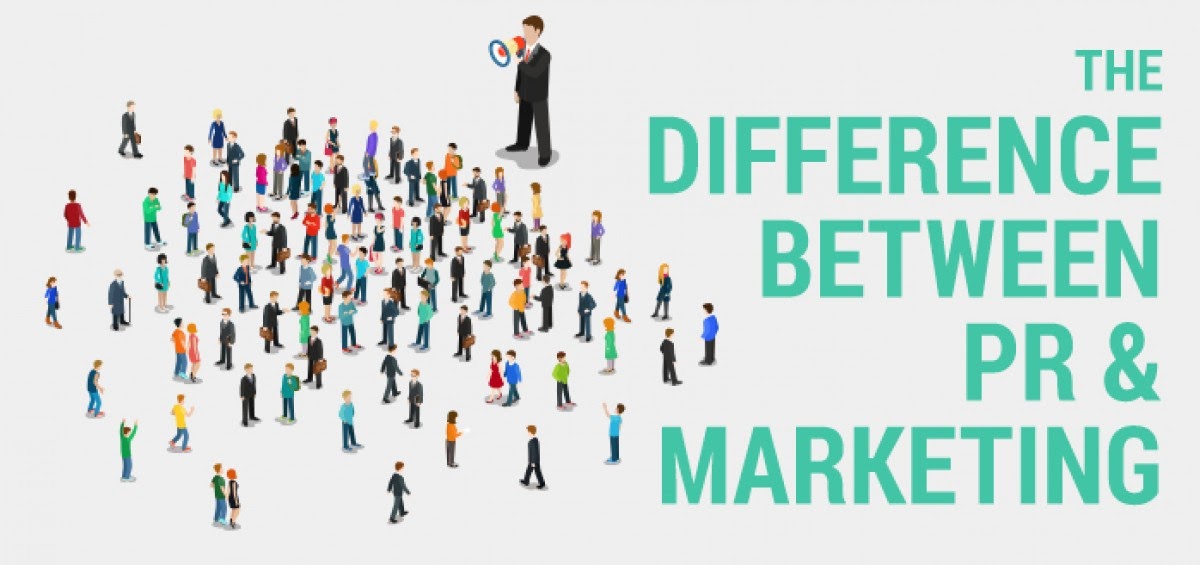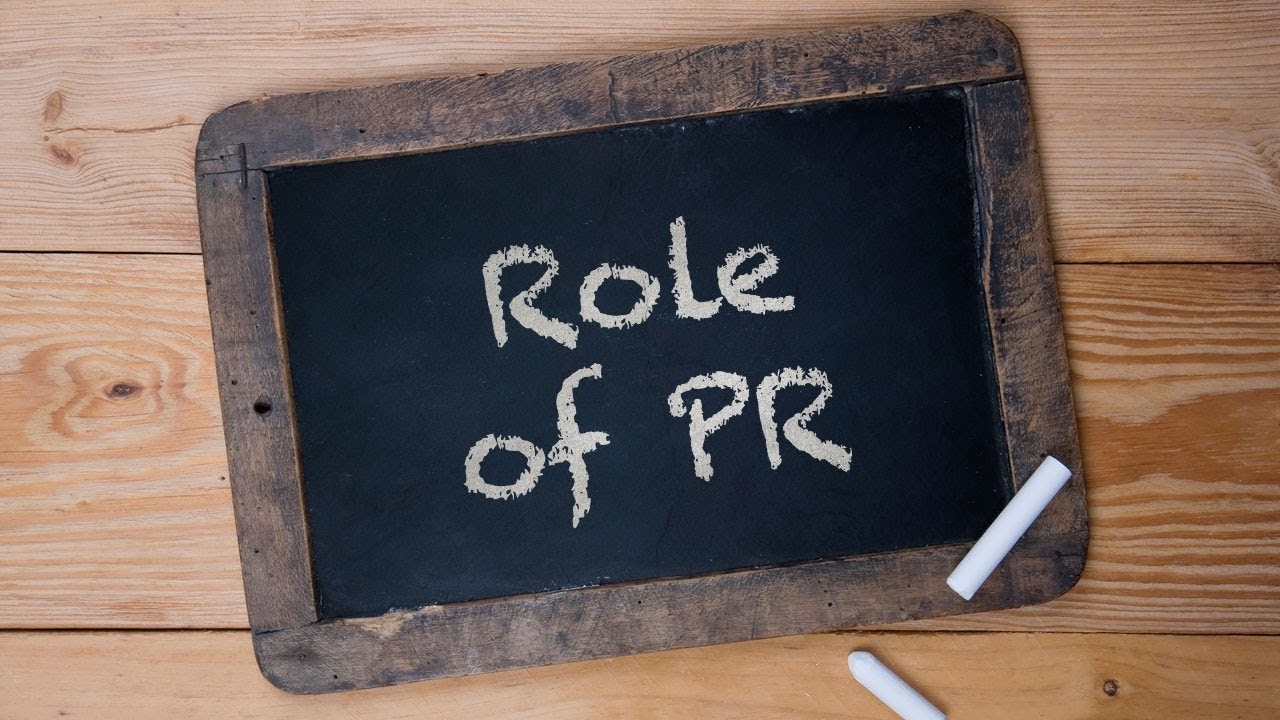What's the difference between Marketing and PR? Why you need Both?
In the modern economy, all businesses are aware of branding’s important to develop their business. Accordingly, Marketing and Public Relations (PR) are two indispensable tools to help businesses achieve this goal.
We think we understand the difference between Marketing and PR. But if you have to state the difference, surely many people will have difficulties because these two terms are often used. Furthermore, these are two activities organized based on mutual resonance. Maintaining a good relationship with the public has always been a vital part of a business plan.
Many people share PR as part of Marketing, and Marketing is part of PR and identifies the two activities together. Such understanding will not be able to see the wonderful harmony between these two good activities. There is always a certain degree of difference, or surely there is a “competition” between PR and Marketing, especially when the question arises: Which activities will dominate today or have a more significant contribution to the company?
So what is the difference between these two industries?
In today’s article, I will introduce you to the different vital factors to understand what Marketing is and what PR is.
Definitions of Marketing and PR
First, let’s learn about the basics of Marketing and PR.
1. Marketing

Marketing is the activities a company performs to promote its purchase or sale of a product or service. Marketing is a broad concept that includes small concepts like advertising, selling, and delivering products to consumers or other businesses. Some marketing is done by affiliates on behalf of a company or large corporation. Basically, marketing seeks to combine a company’s products and services with the customers who want access to those products.
Let’s take a simple example, many people want a car to walk away from the sun, rain, and dust, but only a few people can afford it and are willing to buy it. So businesses must not only quantify how many people want their product, but it is more important to quantify how many people are willing and able to buy it.
Marketers are not creating demand; demand existed before marketers were. Along with other influencing factors in society, marketers have an effect on wants. They influence requirements by making products that are relevant, attractive, affordable, and easy to find for their target audience.
Marketing strongly affects the beliefs and lifestyles of consumers. Therefore, business people’s goal is to find ways to satisfy the wants of consumers by creating products and services at prices that are suitable for the target audience.
The scope of marketing uses varies in many areas such as pricing, storage, packaging, branding, operations and sales management, credit, shipping, social responsibility, retail selection, consumer analysis, wholesale and retail operations, industrial buyer evaluation and selection, advertising, social relationships, corporate marketing research, planning, and Product warranty. In short, marketing is all a company does to win and retain customers.
2. Public Relations (PR)

PR is an acronym for Public Relations, which means Public Relations. Public relations is defined as the methods and activities of communication used by an individual, organization, or government to enhance understanding and build positive relationships with outside audiences.
Public relations is defined as the act of regulating the dissemination of information between a company and the public. It is a process in which an organization makes contact with an audience through third-party endorsements, in which news or other topics of public interest are used to share stories. Examples include newsletters, press conferences, featured stories, speeches, public appearances, and other similar forms of unpaid communication.
Public Relations is intended to inform the public, investors, partners, potential customers, employees, customers, to influence them to create a positive outlook on the company and brand. To build strong trust and community relationships with customers, the organization can also participate in donations, art support, sporting events, free education, etc.
The essence of a public relations profession is to improve a person’s perspective, a company, to broadcast information to the media and get their attention. PR staff must be able to persuade. And while the effect is not apparent, creating your image and increasing your customers and the public’s goodwill are the results you have to achieve.
Depending on the function and scope of each company’s activities, the PR staff is also known as CORA (Corporate and Regulatory Affairs) or EA (External Affairs). In most prominent corporate events, the involvement of PR staff is seen. They have a special role to play in giving the company a healthy image with long-term commitment.
Read more:
- Best Online Advertising Channels to Get New Customers
- 7 Functions of Marketing for Business!
- Marketing vs Advertising: The Differences & Similarities
- Integrated Marketing Communication
4 Main Differences Between Marketing and PR

There are always similarities between Marketing and PR that make people view these two industries wrong. However, if you look closely, you will see four main differences between Marketing and PR as follows:
1. Objectives
Marketing and PR serve different purposes for organizations.
PR is in charge of maintaining a positive image and good relationships between the company and the parties that influence its interests, such as customers, investors, the press, etc. Thus, PR does not participate too much in the business activities of companies. PR can be envisioned as a diplomat that helps strengthen the friendly relationship between business and stakeholders. A PR consultant is responsible for building and enhancing the brand and image of the company. PR plays a key role in shaping brand development strategies.
In contrast, Marketing is associated with businesses’ business activities, and in many cases, the ultimate goal is to help businesses increase revenue. Marketing strategies do not always have to reconcile the interests of the parties. Launching a new product or increasing the price of an existing product, for example, clearly doesn’t bring much benefit to the customer. Marketing plays the role of supporting sales and marketing activities to make a product or service attractive to consumers.
2. Target Audience
PR’s target is all those who influence the interests of the organization, whether it is customers, shareholders, local authorities, or even competitors.
Meanwhile, the marketing target is narrower, often revolving around two main groups: customers (B2C) and businesses (B2B).
3. Success Metrics
As noted above the success of PR can not be clearly seen. But there are still factors that help PR practitioners evaluate their effectiveness in performance such as:
- Many positive presses in important top-tier and exchange distributions and broadcast outlets approximately an item or the company as a whole.
- An effective discourse by one of the company’s officials at a high-profile occasion that leads to more positive press Awards won at high-profile industry events.
- The awesome buzz from social media adherents, writers, industry influencers, and the common open around the company as a whole
For a marketer, the following factors will determine whether their marketing strategy is successful or not:
- Did the item being promoted meet or surpass the goals of the deal?
- Comparing how much was gone through on the promoting campaign to the benefit made from the item’s deals, was the return on venture (ROI) of the campaign high?
- Did you produce an incredible buzz from clients, social media devotees, industry influencers, and the typical open around the product?
4. Tactics
PR includes various activities such as press contact, event organization, charity activities, contests, seminars, social media, etc. In the past, maintaining a good relationship with the press and the media was the main job of PR in the context that paper warnings are still the media that has the most powerful influence on public awareness. Through the press, the PR staff let the public know about the company’s operations and other important information. In essence, PR never pays for its activities. But this is no longer true in this day and age. Since social networks are developing day by day, the activities of PR today are not only limited to the press but also can use social networks, online and offline events to make business communications.
On the other hand, marketing activities range from building a marketing strategy associated with business strategy to each implementation activity, such as displaying POSM to the point of sale or scheduling advertising with television stations, etc. The cost of marketing activities varies from company to company but is generally always more expensive than PR.
The Role of PR

One of PR’s biggest roles that cannot be ignored is to bring real value to your brand.
Firstly, PR helps you step by step branding. If information about your organization is passed on from a third party, it may excite customers to learn more than you advertise about yourself. When information is presented in a more objective way, it is a way for you to build better images easily. The right strategy is a way for the brand image to be developed in the right direction the organization wants.
Secondly, the good messages from PR will accumulate value for the brand. When positive messages are spread, customers will always remember your brand with a good reputation.
Thirdly, you can also foster the development of community relationships through PR. PR campaigns aimed at providing good values to society are the foundation for you to build strong relationships with the public.
The Role of Marketing

1. The role of marketing for businesses
-
Marketing helps businesses to survive long-term and firmly in the market because it provides the ability to adapt to changes in the market and the external environment.
-
Marketing creates a connection between the business’s production activities and the market in all stages of the reproduction process.
2. The role of marketing for consumers
-
Marketing helps to create many types and categories of goods that can satisfy the needs and desires of each group of customers, each customer. Marketing research identifies consumer needs and desires for products with specific appearance and characteristics that guide production planners.
-
Is location useful when the product is in the right place where someone needs to buy it?
-
Ownership benefits appear at the end of the sale when the buyer has full ownership and use of the product.
-
Create usefulness of information by providing information to customers through advertising messages, messages from sellers.
3. The role of marketing for society
-
Marketing is the provision of a standard of living for society. When we look at all the marketing activities of businesses, especially the transport and distribution block, we find that the efficiency of the system of moving goods from producer to consumer can affect big to the issue of social welfare.
-
Business managers and business managers perceive and properly apply marketing and need to have full and correct awareness to create favorable conditions, legal environment, and the pressures to drive businesses from a real marketing perspective.
Why You Need Both Marketing and PR

Marketing and PR always exist in parallel in businesses because they complement each other to make the company grow. There are reasons that companies should combine both Marketing and PR as follows:
1. Credibility
Utilize promoting exercises, such as compiling and analyzing information, giving data around open relations to make important substances. Having difficult information from the promoting office can offer assistance PR increment it is gathering of people center and refine the strategies it employs. Hence; it gives certainty in PR endeavors and a coordinated relationship between exercises and outcomes.
2. Consistency
Today’s clients and commerce prospects are besieged with an apparently boundless stream of data and a large number of alternatives. As shocking because it sounds, the normal person gets between 4,000-10,000 brand messages per day! As a result, clinicians have decided that least seven notices are required for a brand to indeed start enlisting with a given objective.
To dispense with all that “commotion”, businesses got to ceaselessly remind their primary group of onlookers who they are, what items or administrations they offer, and why they are prevalent best to competitors’ products/services. Making and after that, keeping up continuous PR and promoting activities will offer assistance organizations do precisely that.
3. High recognition
By utilizing complementary PR and showcasing strategies, you pick up more permeability for your trade, making a difference you stand out from your competitors. Promoting strategies regularly center on self-created exercises, such as company bulletins, printed and electronic materials, and limited time materials, whereas open relations exercises center on Earned openings, such as media scope, grants, and verbal introductions. Through a cohesive communication methodology - utilizing both showcasing and PR - commerce will be able to grow mindfulness of their organization’s items or services.
4. Total strength
Marketing and PR can and ought to work together to way better reach the specified gathering of people. Since marketers and PR experts have worked in numerous of the same areas, it makes sense that their work can be done collaboratively. Marketing and PR have to be share techniques, messages, and data, and after that collaborate on future tactics.
5. Unified message
Both Marketing and PR ought to be on the same page - and utilize the same message - to optimize endeavors and activities to reach current and future customers. If you’re not as of now utilizing promoting and PR in your trade, consider beginning little, centering on one or two needs, or indeed a extend. In case your company centers on showcasing, but doesn’t utilize PR - or bad habit versa - think hurrying to provide administrations and see how your commerce can benefit.
Related posts:
- 13+ Most Effective Types of Digital Marketing
- What is MBA in Marketing?
- Harley Davidson’s Marketing Strategy
- The Definitive Guide on Marketing Environment!
Conclusion
Marketing activities are under the complete control of the organization while public relations are under the control of the organization and the external media, i.e. the media. The concept of marketing is broader than public relations because the latter is under the umbrella of the former. Hence, both are complementary strategies, and not contradictory.
Hopefully, through the article Distinguishing the differences between Marketing and PR above, you will grasp the roles and functions of each industry. From there, apply in reality the business situation of the company to make wise decisions to bring success and reputation to the business.
New Posts






